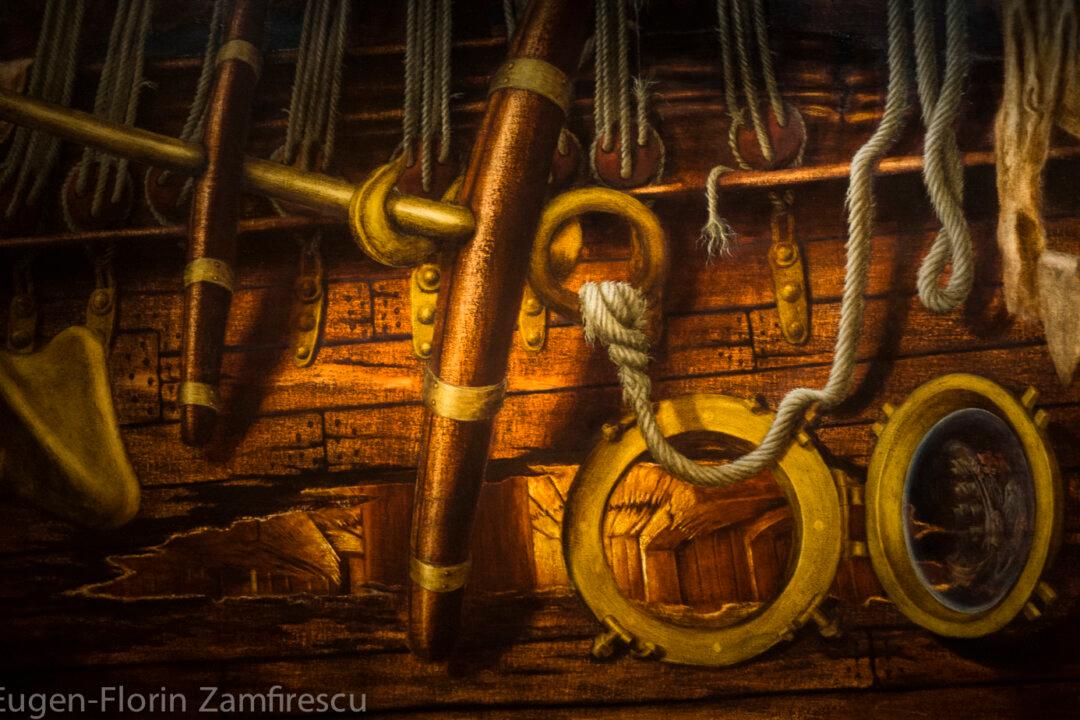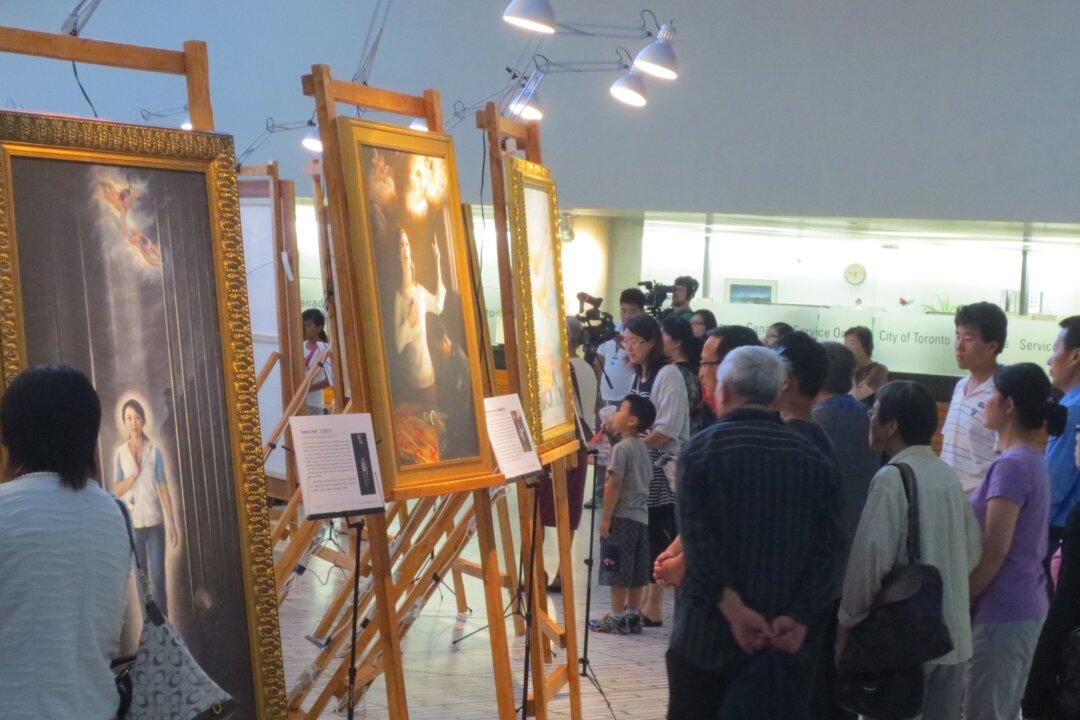Whispering Civilizations, a Toronto exhibit running through October, takes the visitor through a fabulous journey into the mystery of the life cycle of civilizations.
The artist asked himself, “Can art help science and philosophy? Can art help humanity find answers to fundamental questions about our stay here on earth?” These intriguing questions are both a challenge posed to the public and an invitation into exploration and self-discovery.
Romanian Canadian artist Eugen-Florin Zamfirescu explains the philosophy that inspires his work.
Epoch Times: What is the idea behind the exhibit?
Zamfirescu: The idea of presenting the history of civilizations through a series of paintings took root in my mind about 15 years ago. At the time, all I had were questions. Where do civilizations start? How do they develop, collapse, and are reborn again? What factors contribute to their evolution as well as to their demise?
More than 50 years ago, a few were dreaming of discovering the human genome. Can we decode it? Many laughed, many said it is impossible. Today we have the key to the human genome. Is that genome influencing what is going on in our world? We know the answer is yes. My idea is that in addition to the human genome, we have to explore the possibility of a “civilizations’ genome” made of essential elements of our environment, of our social, economical, political structures, as well as of our humanity, with all its good and bad traits. I call those elements “gliding factors,” each with its own characteristics, variable from one moment to another.
I want everyone to see this exhibit as more than a series of paintings; it should be seen as a “thought experiment”. A thought experiment whose fundamental questions are: “Is there a genome of civilizations? Are we able to decipher it, to measure it somehow? Can art help science and philosophy, can art help humanity find answers to fundamental questions about our stay here on earth? Can art help in finding solutions?”
Epoch Times: The exhibit opened Oct. 2. What has the public’s reaction been so far?
Zamfirescu: We had a wonderful opening night followed by Nuit Blanche when the gallery was visited by over 1,100 people. ... I think the biggest surprise was to see the enthusiastic way the art was embraced by young people and their positive reaction to the classical style of painting. They are the new generation, our future, and their wish to find out more about the concept and to engage with the art gives me great hope for humanity.
I often go to art galleries and I am dismayed at how quickly people move from one artwork to the next, without giving time for reflection on what they see. Having people stop for minutes in front of on one of my paintings, then moving on and going back, discussing with others, asking questions, sharing their thoughts, was all very rewarding. I know that many people came back not once but twice, even three times to the gallery to see the paintings again, to have the time to absorb and reflect on the meaning of each painting.
I was glad to hear from people that, in their opinion, the exhibition is built like a film narrative. That’s exactly it! I am also a filmmaker, and choosing for each painting a significant moment in the history of civilizations is in many ways very similar to choosing from a long movie one single frame, the one you consider most charged with meaning.
As a painter I work on my own every day—a solitary experience, difficult at times—so my only chance to connect with an audience is during a show. While critical acclaim and financial success are important to any artist, nothing compares to being told by a total stranger, “Through your art you changed someone—me”. I found that comment in the visitors’ book, one evening last week. It was deeply humbling and the highest prize any artist could wish for.
Epoch Times: How do you see the future of society?
Zamfirescu: Our civilization today is like a beehive flying without a compass. People and organizations push and pull at the fabric of our society. Some have or crave military supremacy, other want ideological powers, and others still, the financial one. The fabric of society is thus ruptured. Is there hope? What should we do?
As someone wrote in the visitors’ book, I like to think that through my art “out of a long, hard view of the history of civilizations,” I was able to “find hope for the future of humankind.”
Now all we need is to find ways to make that hope a reality—if we are to have a future.
“Whispering Civilizations” runs until Oct. 25 at Twist Gallery in Toronto. For more information, visit: www.eugenflorinzamfirescu.com





